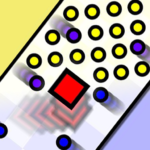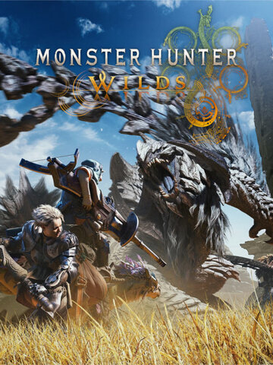Black Myth: Wukong is one of the most highly anticipated action-RPGs of the decade. Developed by the Chinese studio Game Science, it has captivated gamers worldwide with its stunning visuals, deep combat mechanics, and culturally rich setting based on the legendary novel Journey to the West. Combining Souls-like gameplay with mythological storytelling, Black Myth is poised to redefine how Eastern fantasy is represented in modern video games.
From its initial trailer reveal to hands-on gameplay demos, the game has continued to generate excitement for its cinematic quality, immersive world design, and spiritual reinterpretation of Sun Wukong, the Monkey King. In this article, we dive into the evolution of Black Myth: Wukong, from concept to global phenomenon, analyzing its core mechanics, artistic direction, lore, and what makes it one of the most awaited games on Steam and consoles.
1. The Origins of Black Myth: Wukong
A Studio With a Vision
Game Science, founded by ex-Tencent developers, announced Black Myth: Wukong in 2020. What began as an ambitious indie project quickly evolved into a triple-A title after the first trailer went viral, showcasing dazzling Unreal Engine-powered combat and Eastern aesthetics never before seen at this scale.
Inspired by Chinese Epic Literature
The game is based on the 16th-century classic Journey to the West, but reimagines it through a darker, more philosophical lens. Instead of merely retelling the legend, Black Myth explores the spiritual and psychological layers of Sun Wukong’s journey.
2. First Impressions and Community Hype
A Viral Reveal That Shook the Industry
In August 2020, Game Science released a 13-minute gameplay trailer showing real-time combat, boss fights, and cinematic environments. The industry and fans alike were stunned by the quality—some even doubted it was real gameplay. Within hours, it dominated YouTube, Reddit, and gaming forums globally.
Comparisons to Dark Souls and Sekiro
The trailer sparked immediate comparisons to FromSoftware titles. Players noted the challenging combat, dodge mechanics, and enemy design reminiscent of Soulsborne games. But unlike those, Black Myth’s mythology, narrative pacing, and Eastern themes gave it a unique identity.
3. Setting and World Design
A Fantastical China Reborn
Black Myth: Wukong takes place in an ancient world inspired by Chinese landscapes and legends. Expect dense bamboo forests, snowy peaks, forgotten temples, corrupted villages, and ethereal dream realms.
Dynamic and Layered Environments
The world isn’t just beautiful—it’s alive. Wildlife reacts to your presence, weather affects visibility, and secret areas are hidden through verticality and magic. Game Science has promised seamless exploration between zones, without loading screens or UI clutter.
4. Combat Mechanics and Playstyle
Soulslike with a Wukong Twist
Combat is fluid, heavy, and deliberate. Players control Sun Wukong using a mix of staff strikes, martial arts, spells, and magical transformations. Boss fights are intense, requiring perfect dodging, pattern recognition, and mastery of timing.
Transformations and Elemental Power
Wukong can transform into animals and creatures—such as a cicada or a giant beast—adding layers of stealth and strategy. The staff grows in size, spins, or morphs depending on combos, and elemental magic like fire, ice, and wind can be fused into combat.
5. Character Progression and Customization
Beyond Stats and Levels
Instead of a traditional RPG system, progression in Black Myth is tied to enlightenment. Players unlock new abilities, transformations, and passive buffs through spiritual milestones, battles, and exploration.
Skill Trees and Upgrades
A multi-branch skill tree allows you to tailor Wukong’s build to your playstyle—whether brute force, agile counter-attacks, or magical focus. Weapons and gear are limited but impactful, encouraging mastery over quantity.
6. Artistic Direction and Sound Design
Breathtaking Visuals with Cultural Detail
Using Unreal Engine 5, Black Myth delivers photorealistic visuals and stylized effects that blend myth and reality. Every enemy, shrine, and mountain feels handcrafted, filled with symbolism from Taoism, Buddhism, and ancient Chinese folklore.
Traditional Music and Environmental Audio
The soundtrack features classical Chinese instruments like guzheng, erhu, and bamboo flutes, enhancing immersion. Boss themes shift dynamically with phases, while ambient sounds—howling wind, cicadas, temple bells—create an atmospheric experience.
7. Storytelling and Themes
A Deeper Look at the Monkey King
Rather than the mischievous trickster of cartoons, Wukong here is complex—burdened by past lives, moral conflict, and divine judgment. The story examines identity, karma, rebellion, and the price of immortality.
Multiple Endings and Player Choice
While not a full open-world RPG, player decisions may alter narrative paths. Some quests have hidden consequences, and side missions reveal layers of lore beyond the main quest. Expect riddles, moral dilemmas, and philosophical symbolism.
8. Technical Performance and Platforms
Optimized for Steam and Next-Gen Consoles
Black Myth: Wukong is built for high performance on PC and consoles like PS5 and Xbox Series X. Early builds show stable frame rates, fast loading, and scalable graphics options.
Steam Deck and Controller Support
Despite its demanding visuals, the game runs surprisingly well on Steam Deck (based on recent previews). It includes full controller support, adjustable difficulty settings, and visual modes for performance vs fidelity.
Conclusion: The Monkey King Rises Anew
Black Myth: Wukong reawakens an ancient legend in a way that feels both timeless and bold. It takes the core themes of Eastern philosophy—balance, suffering, transformation—and turns them into a living, playable experience. More than just a game, it’s a cultural bridge between old and new, East and West, myth and reality.
With its release drawing closer, anticipation continues to climb. And rightly so—because if the final product matches what we’ve seen so far, Black Myth: Wukong could be the new gold standard for action RPGs in the modern era.




























